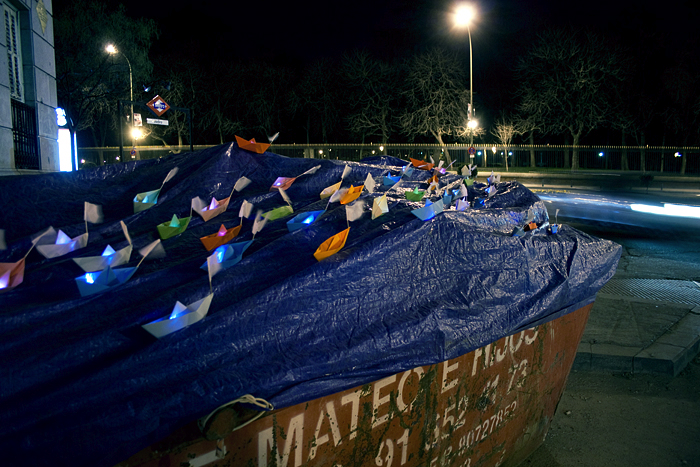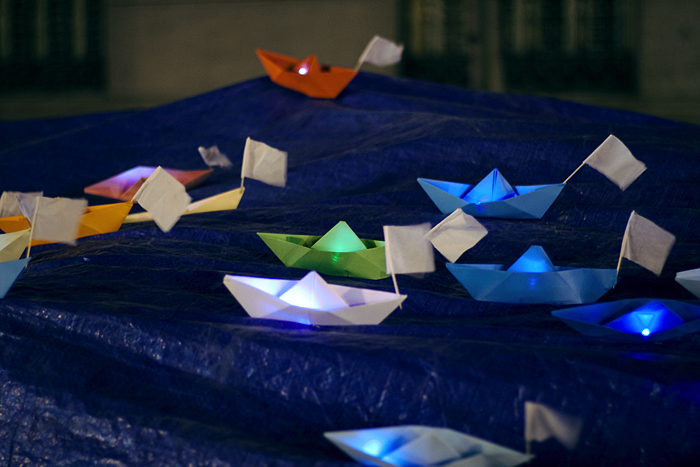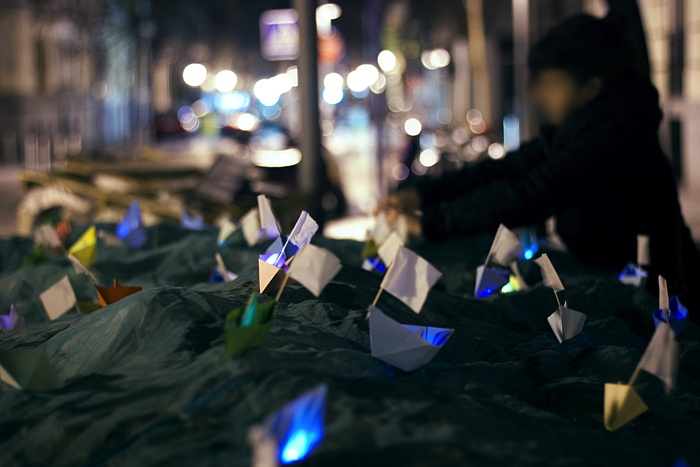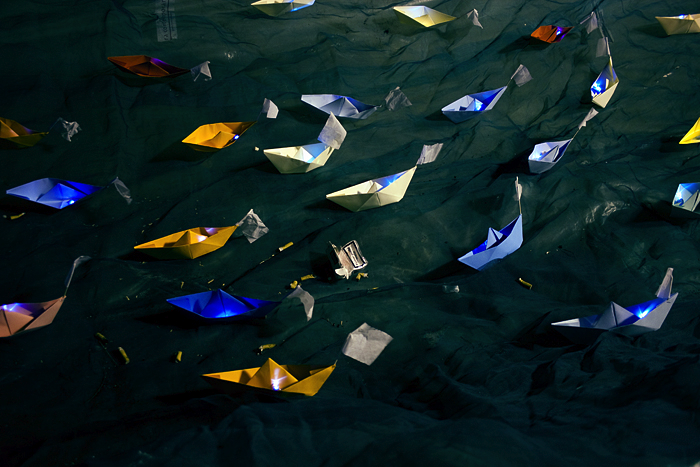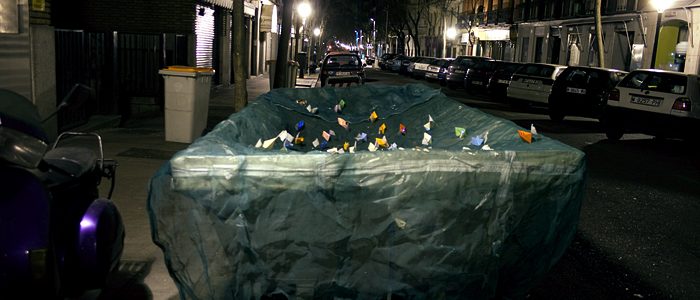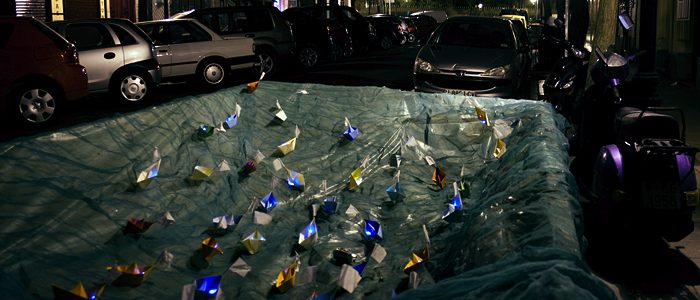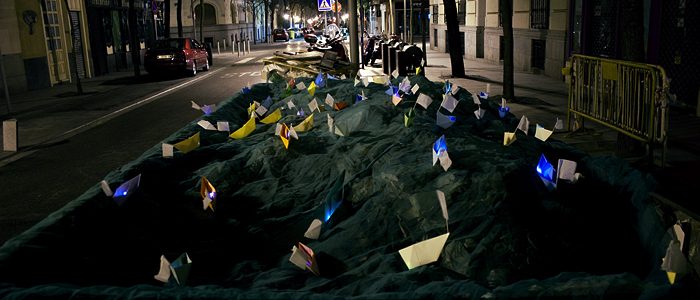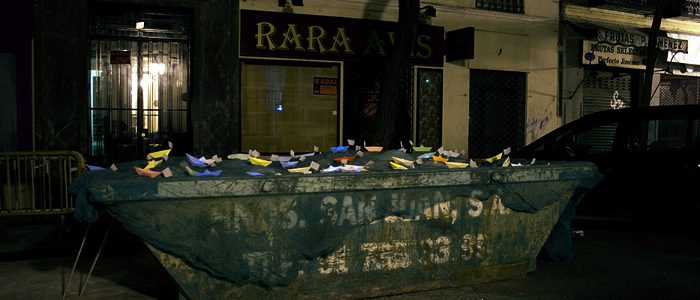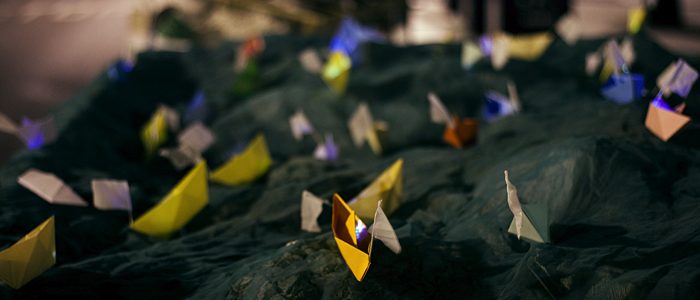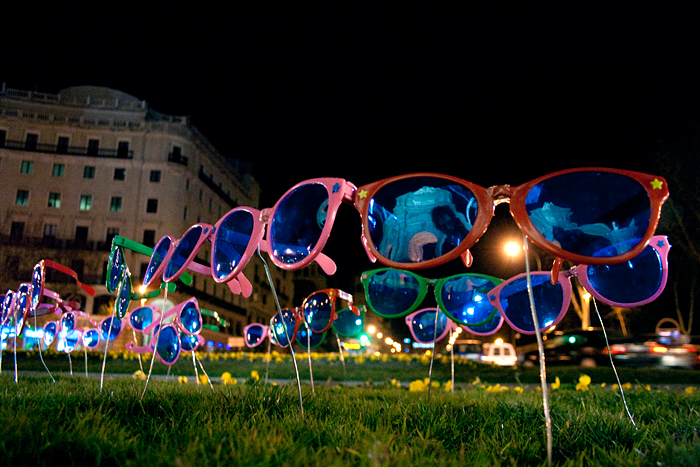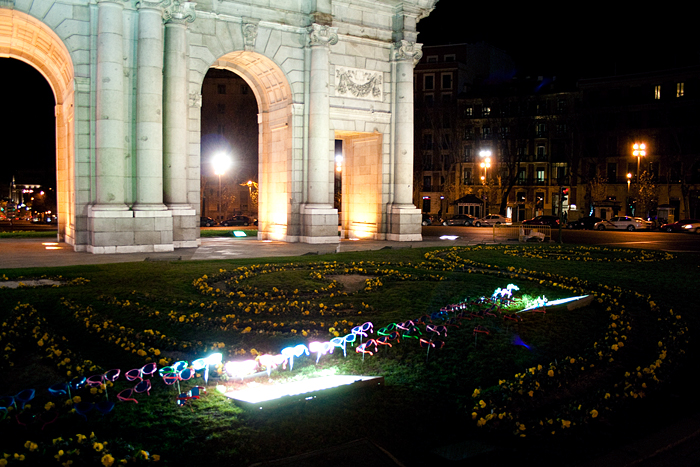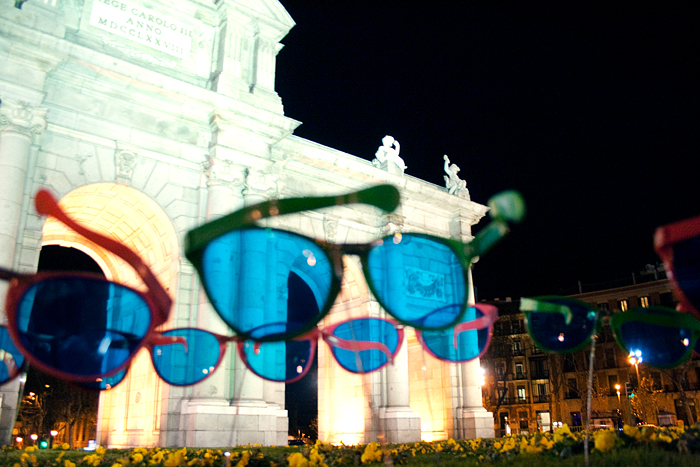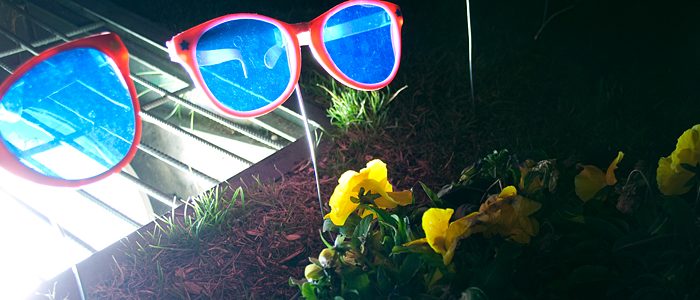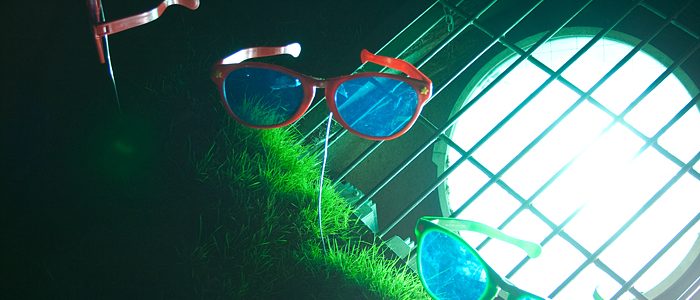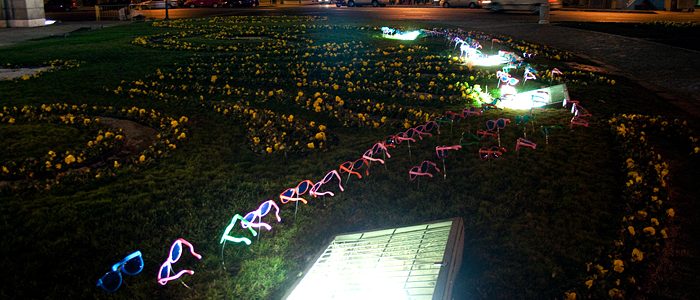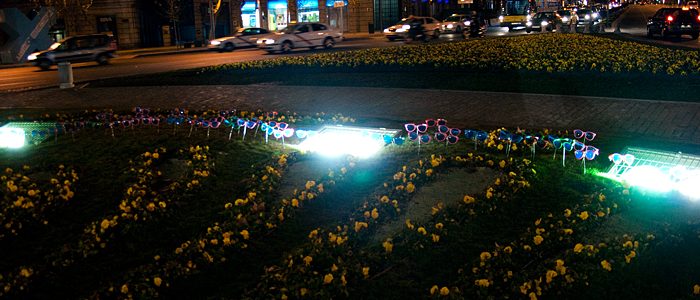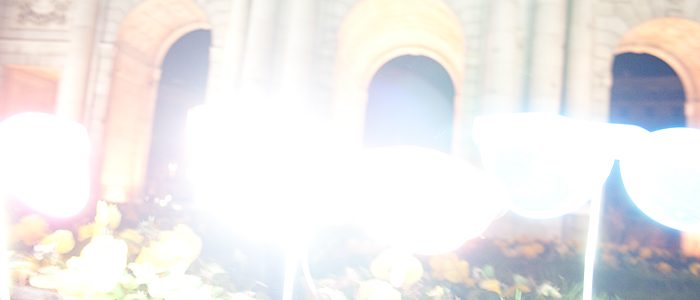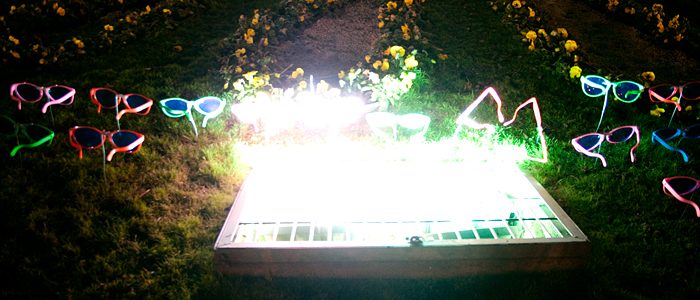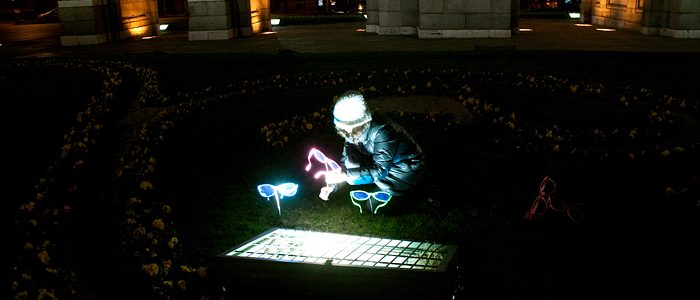Limpieza que brilla / Cleaning that shines
La crisis ha dejado representativos edificios de la ciudad sin uso y en lamentable estado de abandono, uno de ellos fue de Telefónica, la más importante empresa de telefónia de España y está situado en la Plaza de España.
Este edificio fue comprado con dinero del estado cuando Telefónica era una empresa estatal y vendido cuando fue privatizada para construir un parque empresarial en los extrarradios. En la actualidad se encuentra completamente destrozado y abandonado, a la espera de ser subastado tras la quiebra de sus actuales propietarios.
Pasar por delante de él, produce una sensación de suciedad y tristeza, sobre todo por la noche, que en parte se paliaría con una buena limpieza.
Tratando de llamar la atención sobre su estado, para que se proceda a su limpieza, hemos llevado a cabo la acción Cosas que sería mejor que estuvieran limpias, en la que 100 paños blancos e impolutos, fueron colocados en la entrada de este edificio, ahora oscuro lleno de suciedad y de orina.
Fotos de Gustavo Sanabria.
Tiempo de montaje en la calle: 2 horas.
Daños ocasionados: 0.
Permanencia de la intervención: ¿12 horas?.
———————————————————–
The crisis has left important buildings in the city unused and in an appaling state of neglect, one of them was owned by Telefonica, the largest telephone company in Spain and it is located in the Plaza de España.
This building was purchased with state money when Telefonica was a state owned company and sold when Telefonica was privatized in order to build a business park on the outskirts of the city. It is currently in a state of absolute disrepair and abandoned, waiting to be auctioned off following the bankruptcy of its current owners.
Passing in front of it, gives one a sensation of filth and sadness, especially at night, which could be lessened by a good cleaning.
Trying to call attention to its state, so that they proceed with cleaning it, we carried out the installation Things that would be better if they were clean, in which 100 pristine, white cloths, were placed on the entrance to this building, now darkened by filth and urine.
The photos, as always, are by Gustavo Sanabria.
Time of installation: 2 hours.
Damages: none.
Exhibition time: 12 hours?.
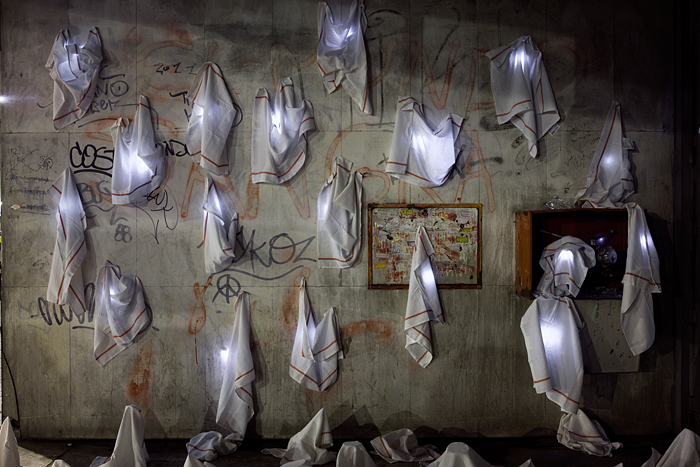
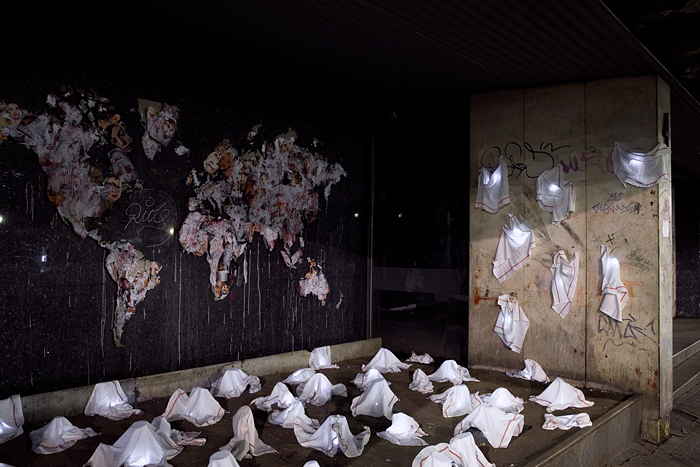
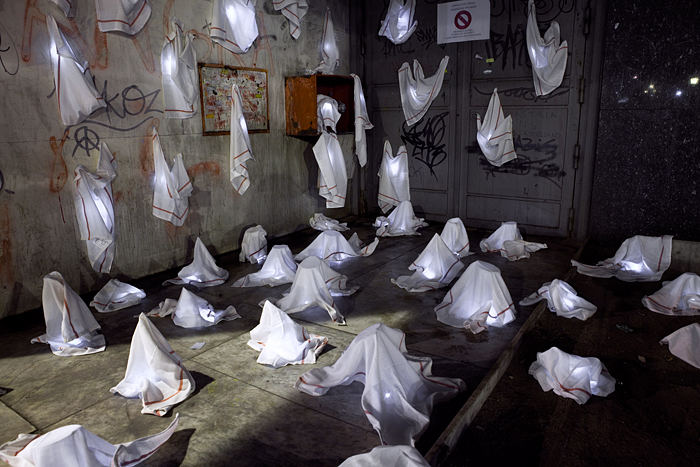
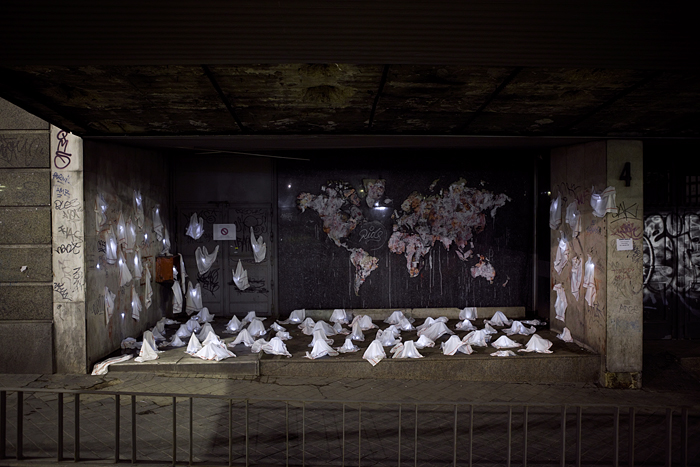
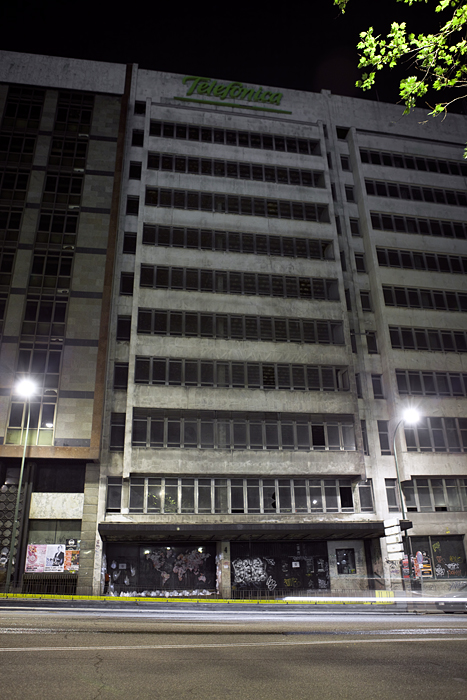
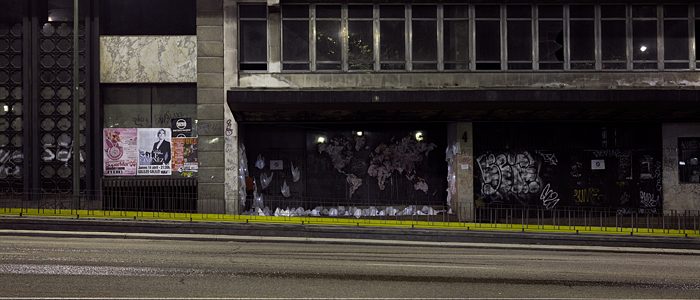

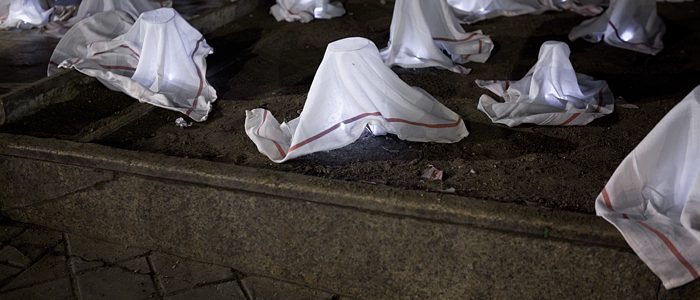
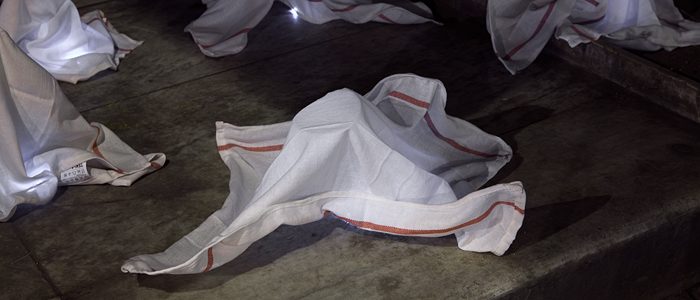




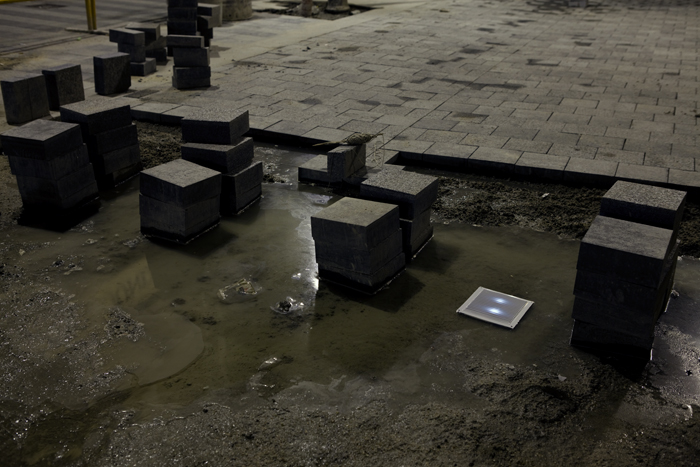



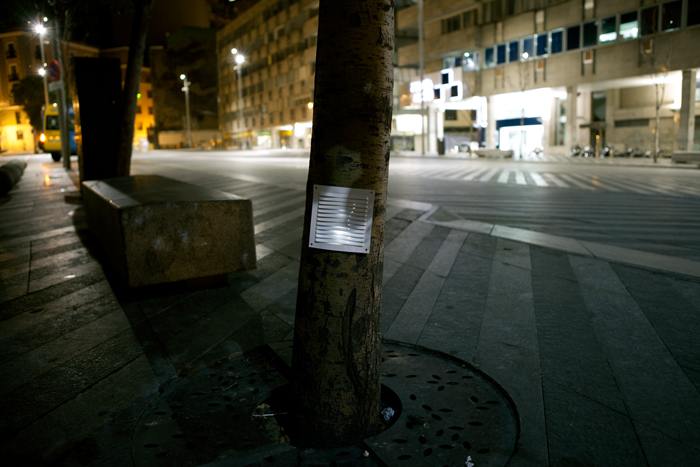
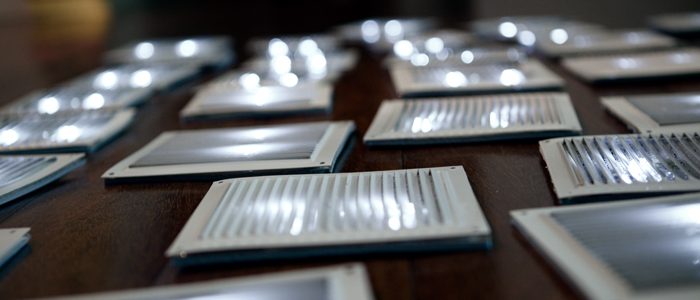
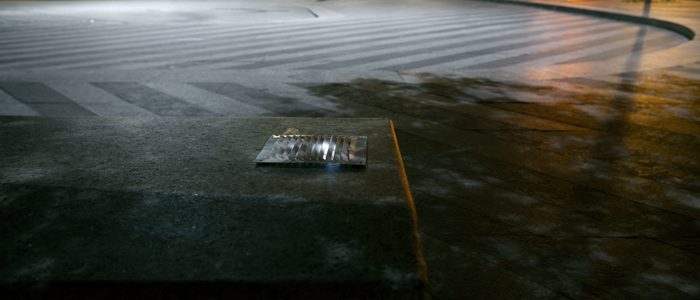
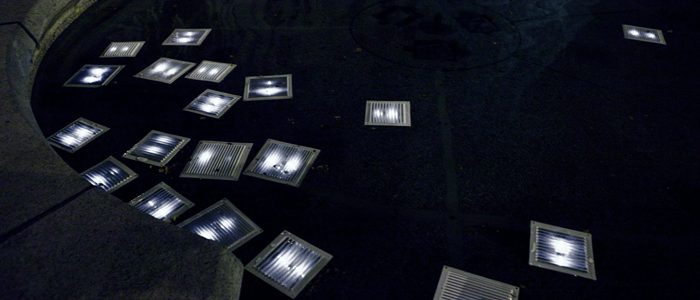
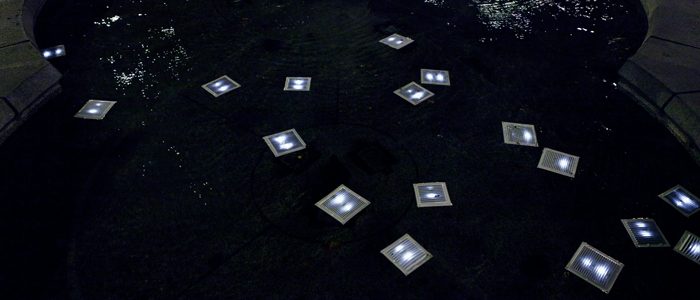
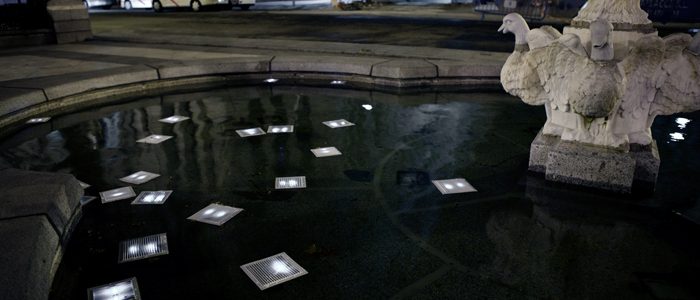
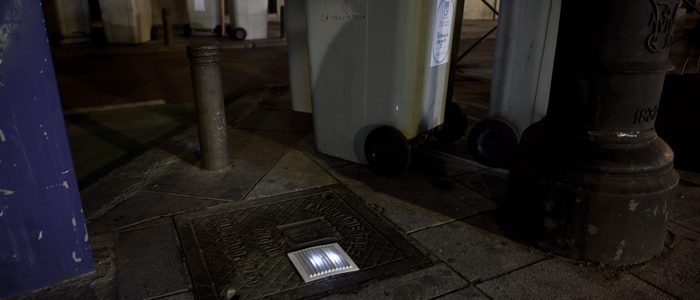
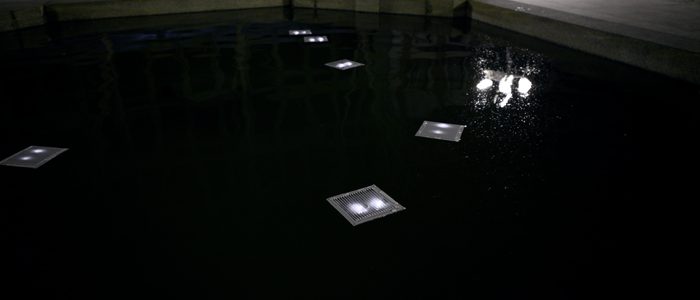


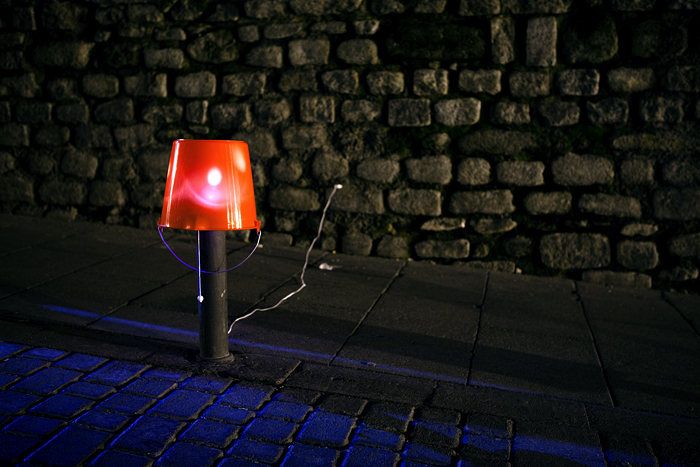
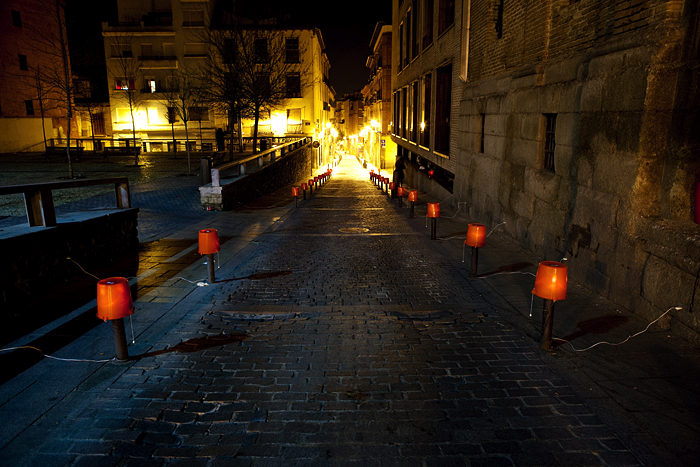
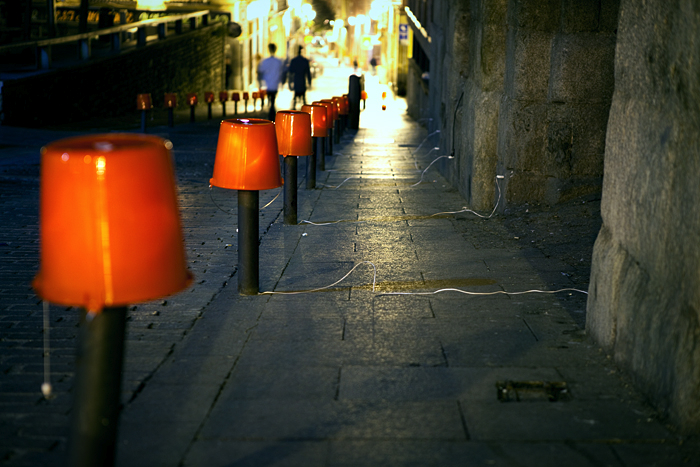

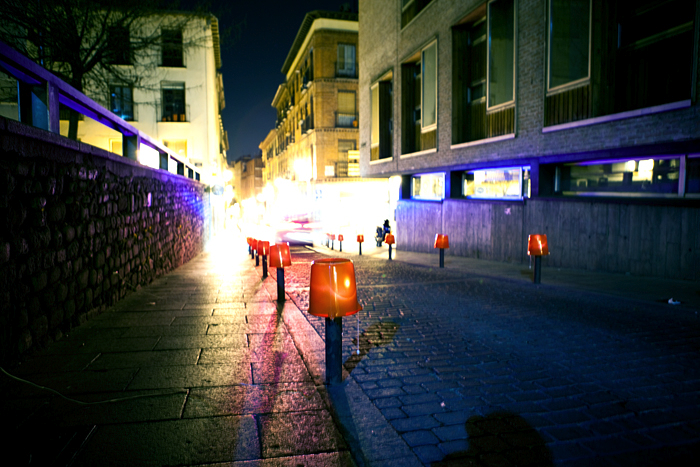
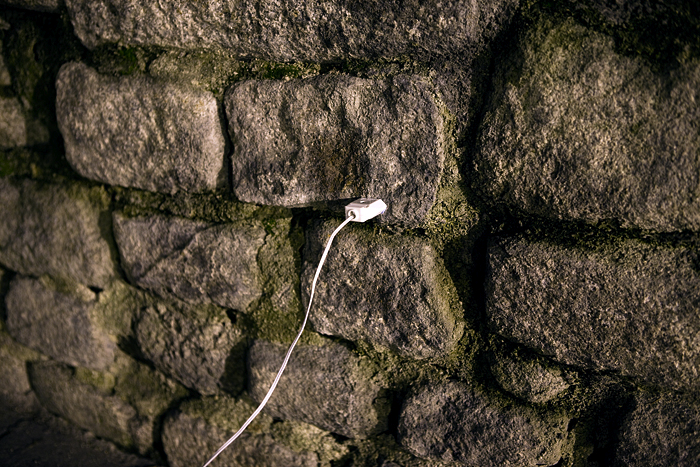
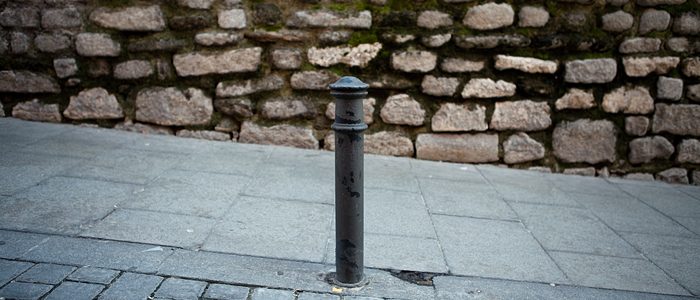
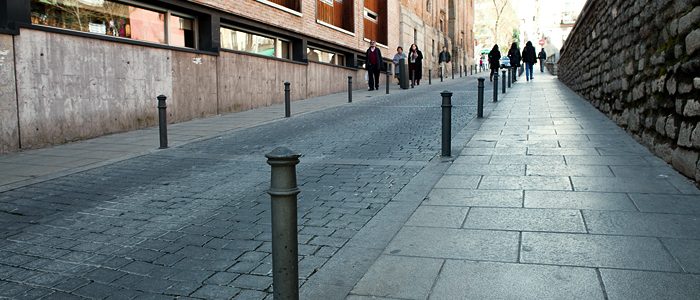
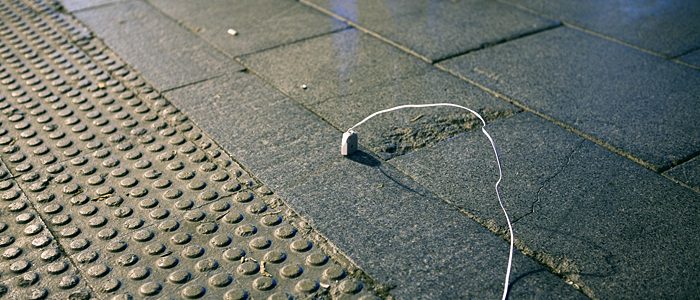
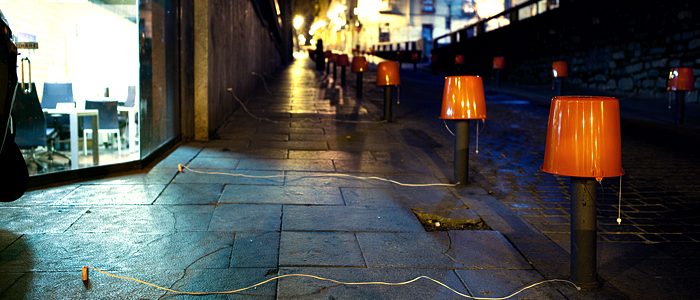

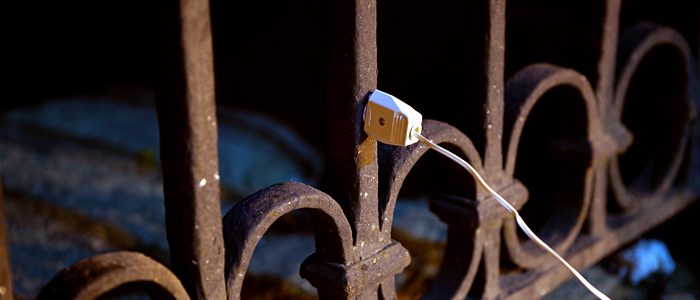
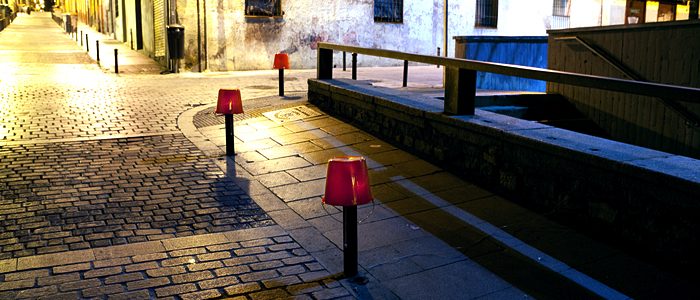
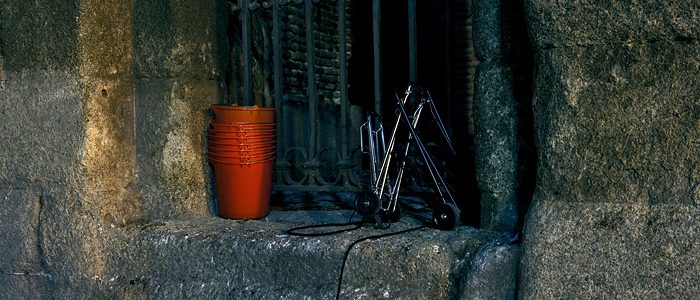
![IMG_0102[1]](https://www.luzinterruptus.com/wp-content/uploads/2011/03/IMG_01021-700x300.jpg)
